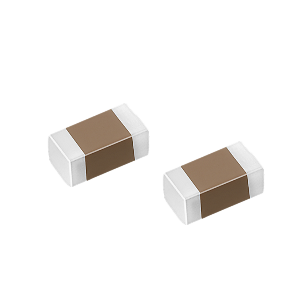In an ideal world, ceramic capacitors could be designed in a way where they would exhibit no resistance. However, this is physically impossible to achieve as there will always be some type of internal resistance in a capacitor that appears in series with the capacitance of the device. Known as equivalent series resistance (ESR), the level of this resistance will vary across capacitors depending on a variety of factors including the dielectric materials used, frequency of the application, leakage, and quality and reliability of the capacitor.
The value of ESR may be very small in some instances and is negligible for some simple designs or low-frequency applications. However, for some high-power or high-frequency applications, accounting for the ESR value in the overall impedance calculations can be crucial for maintaining operational efficiency or preventing potential failures. Let’s look at how to account for ESR for these types of applications.
First, to ensure your capacitor is operating at the point where resistance is minimal, it is important to understand the self-resonant frequency (SRF) of your circuit. The SRF is the point where the capacitor will exhibit the least amount of impedance since at this point ESR is the only factor contributing to the total loss of the capacitor. At low frequencies, impedance is dominated by dielectric losses due to the delay of polarization. As frequency increases above the SRF, parasitic inductance begins to dominate the behavior of the circuit, which can cause the capacitor to overheat and potentially lead to failure. Since ESR is dependent on the frequency of the application, the SRF is impacted by the operating frequency.
Using Low-Loss, High Q MLCCs to Minimize ESR for High-Frequency Circuits
In general, aluminum and tantalum capacitors exhibit a higher ESR than ceramic capacitors of the same capacitance and voltage rating.
Thus, multi-layer ceramic capacitors (MLCCs) are usually the best option for high-frequency or high-power applications. By using low ESR MLCCs in these applications, capacitor losses can be minimized, while the efficiency and stability of the power supply are increased, and the output ripple voltage is decreased.
We understand the impact ESR can have on these high-power or high-frequency circuits where Q is critical. We also know that there is not just one ultra-low ESR capacitor that can work for everyone since ESR changes depending on the frequency your device is operating at. Thus, we make a line of Class II ceramic dielectric (BX or X7R dependent on chip size) that
offers high volumetric efficiency with negligible piezoelectric effects. We specifically designed this series to operate reliably in rugged environments such as those present in high-power broadband coupling and switching power supplies.
Overall, a capacitor with low ESR dissipates less heat and can prevent overheating of the MLCC which could potentially lead to capacitor failure. Therefore, if you’re making a circuit that requires high power or needs to operate at a high frequency where any amount of additional resistance could negatively impact your circuit, you need to be aware that ESR is a
factor that must be considered for your application to function reliably. Please contact us now!
